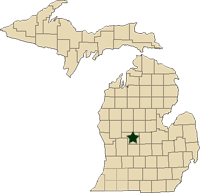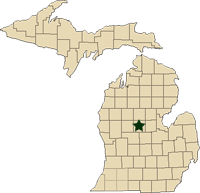Regional reports on Michigan field crops – May 31, 2012
MSU Extension educators’ pest and field crop updates for Michigan.
This week’s regional reports:
- West Central Michigan - Fred Springborn
- Central Michigan - Paul Gross
West Central Michigan – Fred Springborn, Michigan State University Extension
|
Weather
Scattered rain and thunder showers fell in the region over the course of the week, bringing much needed rain to some areas but missing many, leaving several areas dry and still in need of rain. Storms on May 26 yielded 0.6 to an inch in southern Mecosta County. A few growers around Fremont, Mich., reported 0.5 inches on May 28.
There’s been a very wide range of high air temperatures this week, from 91°F on Monday, May 28, to 65°F the following Wednesday, May 30. Low air temperatures ranged from 65 to 45°F, no reports of frost. Low soil temperatures at 2 inches are in the mid-60s. Average humidity levels ranged from the mid-50s to 70 percent.
Crops
Wheat is now past flowering in most fields. There are still a few fields lagging behind that are in mid-flower. Leaf disease pressure has increased in untreated fields with a few fields having leaf rust symptoms. Much of the leaf disease pressure is from powdery mildew. Cereal leaf beetles are present in many fields, but not at high levels. No reports of armyworms, although scattered outbreaks may still be detected as the week progresses and larvae become larger and more easily found. Soils in many wheat fields are quite short of moisture; irrigation has been running where available.
Alfalfafirst cutting continues with uncut fields now at 1/10 bloom. Alfalfa weevil is still present in many fields. I have not found potato leafhoppers, but I anticipate their arrival soon.
Corn planting is complete with fields ranging from V6 to V4 with several fields at V2 to just emerging. Emergence has been rapid on the later planted corn.
Dry bean planting has just started with less than 5 percent of the crop planted in Montcalm County.
Soybeanplanting is finishing up with early planted fields having the first trifoliate. Conventionally tilled fields, as well as several no-till fields, could use additional moisture to aid germination and emergence.
The first western bean cutworm moths were caught in Montcalm County this week. Armyworm pheromone traps in Montcalm County caught an average of zero moths per trap last week. No black cutworm moths were caught.
Central Michigan – Paul Gross, Michigan State University Extension
|
Weather
The northern parts of the region benefited from up to 3 inches of much needed rain over the Memorial Day weekend (May 26-28). The rains were widely scattered with some areas of the region receiving no rain. Warm temperatures along with the warm soils have been near ideal for emergence of crops planted when moisture was adequate. Most of the region is in need of rain for emergence of later planted crops.
Commodity reports
The corn crop is planted and off to a very good start. With the warm weather, the early planted fields will be knee-high by June 4 this year. Sidedress nitrogen applications are being made. Farmers are being advised to pay close attention to maximum and minimum corn and weed height restrictions on post-emergence herbicide applications. Refer to the Weed Control Guide for field crops or visit the MSU Weed Control website for more information. Scout fields for armyworm and other pests. This is also a good time to walk your fields to evaluate your stands and make notes on any planter adjustments that should be made for next year.
Soybean planting is wrapping up. The early planted fields have the first trifoliate leaves emerging. Stands are very good where there is adequate moisture. Weeds are off to a good start in no-till fields, so be timely with the first herbicide applications. Early season weed competition can reduce yields if not controlled in a timely manner. Scout fields for pest and stand problems.
The wheat crop is flowering and most are past the stage for fungicide applications. At this point in the season, be cautious of the pre-harvest intervals on any products applied to wheat. We are seeing a lot of disease pressure in fields that have not had fungicide applications. This year there is an alarming amount of powdery mildew and septoria on the flag leaves of susceptible varieties.
Farmers interested in learning more about this year’s wheat crop are invited to attend a Wheat Field Day on June 5 at the Mike and Gary Hauck farm, 498 W. Weidman Rd, Mt. Pleasant, Mich. (view map). The program is from 10 a.m. to Noon. There will be two RUP credits for the program.
Alfalfa harvest is nearly completed. The farms on aggressive cutting schedules have good regrowth on the second cutting. Yields are reported to be about 60 percent of normal, but the quality is considered good. There are reports of alfalfa weevil populations above threshold in the northern areas. Scout regrowth for this pest. No reports of potato leafhoppers at this time, but populations in the southern states are very high. The storm fronts coming this week are expected to bring this pest along with them. New seedings are off to a good start. Scout these seedings for potato leafhoppers.
Oats and barley are in the boot stage and doing very well. Herbicide applications have been made. Scout this crop for foliar diseases.
Sugarbeet stands look very good with no serious problems reported. The crop is off to an exceptional start this year.
Dry bean planting is just getting underway.



 Print
Print Email
Email





